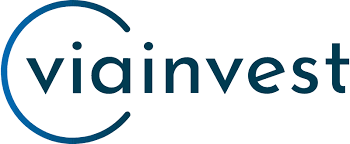Loans
Mortgage Loan Modifications: An Alternative to Foreclosures

Earnest Money Deposits: What They Are and How Much You Need to Put Down
If you’re struggling to pay your mortgage, you’re not alone. According to the Consumer Financial Protection Bureau, over two million families are at least three months behind on their mortgage payments as of 2021. As some pandemic mortgage protections come to an end, that means millions of households may be at risk of losing their homes.
For those looking for some relief, mortgage modification programs are a potential solution. But what is a mortgage loan modification? It’s a process where you work with your lender to change your loan terms, potentially reducing your monthly payments or even reducing your principal balance.
In this article
- What is a mortgage loan modification?
- How mortgage loan modifications work
- Pros and cons of mortgage loan modification
- How to get a mortgage loan modification
- Mortgage loan modification vs. refinance
- FAQs
- Alternatives to mortgage loan modification
- The bottom line
What is a mortgage loan modification?
A mortgage loan modification is a type of loss mitigation, meaning you and your lender work together to prevent foreclosure. You may be able to start the process of getting a loan modification after you’ve missed a mortgage payment or are about to miss a payment.
Mortgage modifications require you to prove that you’re undergoing a significant financial hardship that makes affording your current mortgage payments impossible. If you qualify, you can potentially change your loan’s terms to make your mortgage payments easier to manage on your current budget.
How mortgage loan modifications work
If you’re losing sleep over money and are afraid of losing your home, a mortgage loan modification might be for you. If you can show your lender that you’re experiencing financial hardship, they might be willing to work with you so you can stay in your home — and they avoid the headaches that come with the foreclosure process.
If you qualify for a mortgage loan modification, the lender could potentially change your loan terms in the following ways:
- Changing your mortgage term: Your lender might extend your original loan term. For example, if you have 20 years left on your loan, the lender may extend it to 25 or even 30 years. The longer loan term will reduce your monthly payment amount, but you’ll pay more in interest over the life of your loan.
- Lowering your interest rate: The lender could reduce your interest rate. Cutting the rate by even a few points can lower your monthly payment and may help you save money over your repayment term.
- Reducing the principal balance: While rare, your lender may offer you a mortgage principal reduction and give you more equity in your home. However, the equity you receive may be taxable as income, increasing your tax bill later on.
- Converting your mortgage to a fixed-rate loan: If you have an adjustable-rate mortgage (ARM), the lender might convert your loan to a fixed-rate mortgage. With fixed-rate loans, your interest rate and monthly payments won’t change, which could make it easier to budget and manage your finances.
Pros and cons of mortgage loan modification
Before undergoing a mortgage loan modification, make sure you carefully weigh the pros and cons:
Pros
- You might be able to prevent foreclosure: If you’ve fallen behind on your payments or are in danger of falling behind, the bank can foreclose on your home. Working with your lender to modify your mortgage terms might help to prevent foreclosure from happening, allowing you to potentially keep your home.
- You might be able to get a lower monthly payment: If you can’t afford your current payments, a mortgage loan modification could help to reduce your payments.
- You could potentially get a fixed-rate mortgage: If you have an ARM, your interest rate and monthly mortgage payments may fluctuate over time, making it difficult to plan ahead. By switching to a fixed-rate mortgage, you’ll get more predictable monthly payments.
- You might reduce your stress: Worrying about your mortgage payments can be a significant mental burden. Undergoing a mortgage loan modification could help relieve financial stress once it’s complete since your payments may be more affordable.
Cons
- The process is typically lengthy: A mortgage loan modification may be incredibly time-consuming. Depending on your lender and your situation, the modification process could take between three and 12 months.
- You need to prove a significant financial hardship: Not everyone will qualify for a mortgage loan modification. You usually need to have a qualifying hardship, such as unemployment, long-term disability, or divorce, to be eligible for lender mortgage modification programs.
- Your total loan costs may increase: Depending on the terms of the mortgage loan modification, the overall cost of your home loan may increase. If your payment term is extended to reduce your monthly payment, you could pay thousands more in interest charges over the life of your loan due to the longer loan term.
How to get a mortgage loan modification
If you’re wondering how to get a loan modification, it’s important to follow these steps and keep careful records:
- Contact your lender or loan servicer: As soon as you realize you’re at risk of missing a mortgage payment, contact your lender or mortgage servicer and explain what’s going on. Reaching out to them right away could potentially make them more willing to work with you.
- Collect documentation: You’ll typically have to show proof of financial hardship, so collect documentation. For example, if you lost your job, make a copy of your termination letter or unemployment benefits. If you have become disabled, get a letter from your physician detailing the severity of your disability and how it affects your ability to earn income.
- Complete a mortgage loan modification application: Each lender will have its own loan modification application process, so you’ll need to complete your lender’s version. The lender will likely request proof of income, such as your tax returns, pay stubs, or monthly bank statements.
- Write a hardship letter: Your lender may ask you to write a hardship letter where you state why you can’t afford your mortgage payments. In your letter, include your contact information, loan account number, and specific details about your financial hardship. If you’ve been in contact with a lender representative or counselor, include that person’s information as well.
- Accept or deny the lender’s offer: After you submit your loan modification application, the lender will either deny your request or will send you a modification offer. Review the terms of your loan carefully and respond according to the lender’s instructions if you’d like to accept the offer.
- Make your trial payments: Depending on your lender’s program, you might have to complete a trial period before the loan modification can be completed. During the trial period, you may have to make several months of on-time loan payments at the newly determined amount.
Federal mortgage loan modification programs
You may be eligible for federal mortgage loan modification programs. Depending on your situation and the type of loan you have, you could potentially qualify for one of the following:
- COVID-19 Relief: If you cannot afford your mortgage payments and your loan is owned by either Freddie Mac or Fannie Mae, you may qualify for hardship programs. Fannie Mae and Freddie Mac extended their foreclosure moratorium on single-family homes through June 30, 2021. In addition, borrowers with mortgages backed by the companies may be eligible for three-month extensions. Eligibility for the COVID-19 mortgage forbearance extension is limited to borrowers who were in a COVID-19 forbearance plan as of February 28, 2021.
- Freddie Mac Enhanced Relief Refinance Mortgage: The Freddie Mac Enhanced Relief Refinance Mortgage (FMERR) is for borrowers with existing Freddie Mac mortgages who are making their payments but cannot take advantage of standard refinancing Freddie Mac refinancing options because their new mortgage exceeds maximum loan-to-value limits.
- Veteran Interest Rate Reduction Refinance Loan: Veterans with mortgages backed by the Department of Veterans Affairs (VA) could potentially qualify for a VA interest rate reduction refinance (IRRR) loan. IRRR loans may reduce your monthly payments by lowering your interest rate or could convert your adjustable-rate loan to a fixed-rate loan.
Mortgage loan modification vs. refinance
Mortgage loan modifications are very different from traditional mortgage refinancing. While mortgage loan modifications are designed for borrowers experiencing significant financial hardships, traditional mortgage refinances are for borrowers in stable financial shape who want to take advantage of lower mortgage interest rates.
With refinancing, you replace your existing loan with a new mortgage. You can also completely change lenders. Mortgage loan modifications help borrowers stay in their homes, while the goal of traditional mortgage refinancing is typically to save money over the life of the loan by lowering the mortgage’s interest rate.
How to Get Pre-Approved for a Mortgage – And Why You Might Want To
Refinancing is more expensive than modifying your mortgage. You’ll probably have to pay closing costs when you refinance your mortgage, or you might be able to roll them into the loan principal.
FAQs
Will a mortgage loan modification impact your credit score?
While a mortgage loan modification could potentially allow you to keep your home, it can also damage your credit score. Borrowers who pursue mortgage loan modification might see their credit scores drop by 30 to 100 points, but how much your score is affected is dependent on your current credit score and payment history.
However, that doesn’t mean you should forgo a mortgage modification. While it can temporarily hurt your credit, mortgage loan modifications are typically less damaging than a foreclosure or bankruptcy.
Do you pay closing costs with a mortgage loan modification?
Mortgage loan modifications don’t require you to pay closing costs. However, you might be liable for other charges that you incurred before the loan modification is approved and completed, such as foreclosure attorney fees or late fees. There could be other additional costs, such as credit report or filing fees, but these charges tend to be much smaller than you’d pay in closing costs with a mortgage or traditional mortgage refinance.
How long does a loan modification take?
The process to get a loan modification can be extensive. Depending on your lender and their mortgage loan modification program, the process might take 3-12 months.
What documents do you need for a mortgage loan modification?
To apply for a mortgage loan modification, you typically need to provide the following documents:
- Recent pay stubs
- If self-employed, quarterly or year-to-date profit and loss statements
- Documentation of additional income, such as tips or bonuses
- Documentation of benefits received, such as Social Security or disability benefits
- Two most recent bank statements
- Utility bills showing your name and property address
- Unemployment benefits letter, if applicable
- Federal tax return
- A financial hardship letter explaining your situation
Alternatives to mortgage loan modification
If you want to adjust your mortgage but don’t think a mortgage loan modification is right for you, these alternatives might be available:
Traditional refinance
If current mortgage interest rates are lower than when you applied, or your credit score has improved, you might be eligible for traditional mortgage refinancing. When you refinance your mortgage, you replace your existing home loan with a new mortgage. The new loan will have different terms, and you could potentially qualify for a lower interest rate than you have now. Check out the best mortgage lenders to find the right lender.
Short sale
A short sale is an alternative to foreclosure, but you’ll still have to move out of your home. With a short sale, your lender agrees to allow you to sell your home and use the proceeds to satisfy the mortgage, even if the sales price is lower than the remaining balance. If you decide that a short sale could be right for you, consider using the Consumer Financial Protection Bureau’s Find a Counselor tool to find a housing counselor near you.
The bottom line
If you’re unable to afford your housing payments, you may be wondering what options are available that could potentially help you keep your home. Now that you know the answer to “What is a mortgage loan modification?” you can come up with a plan that works for you.
If you are struggling to keep up with your payments, contact your lender right away to discuss your options. Depending on your situation, you might be eligible for a temporary payment forbearance, interest rate reduction, or an extended loan term to reduce your monthly payment.
To get help and personalized advice, you can also call the national Homeowners HOPE hotline at 888-995-HOPE (4673). The hotline’s counselors can give you free and confidential financial education and inform you of different programs that could potentially help you keep your home and prevent foreclosure.
Fastest, Easiest Way to Refinance Your Mortgage
 Visit Figure
Visit Figure
Figure Benefits
- Take advantage of historically low interest rates
- Easily see your rate in a few minutes
- 100% online application done from the comfort of your home
- Good/excellent credit needed
Visit Figure
Best Home Improvement Loans of 2021
Unmasking Online Deception: An In-Depth Social Catfish Review
Purple Garden Psychics – ($1/Min) FREE Trial Offers, Real Experience & Benefits And More

Refinancing an Auto Loan: How to Know If It’s a Good Idea

Reverse Mortgages Pros and Cons: Ripoff or a Good Idea?

8 Ways it Just Got Easier to Achieve Student Loan Forgiveness
Unmasking Online Deception: An In-Depth Social Catfish Review

Orchard Bank Credit Cards | NOT a Scam!

PrivacyGuard Review

How to choose where to study as an international student


